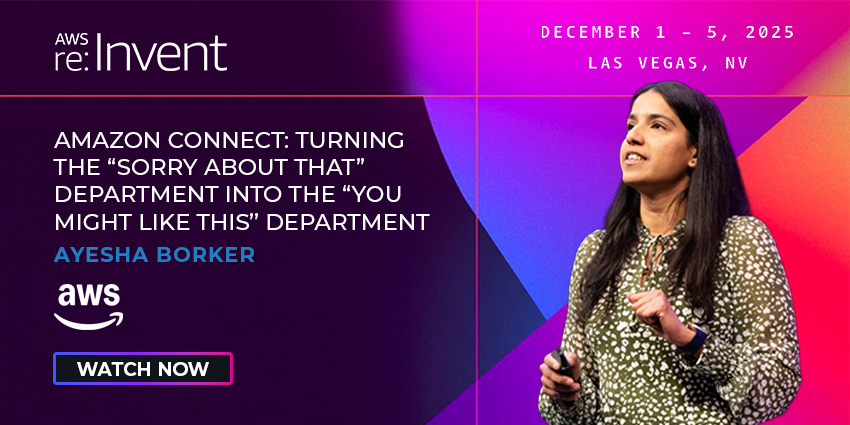The CX industry has long touted the benefits of CCaaS, UCaaS, and CPaaS on one unified platform.
Yet, a converged enterprise communications stack isn’t turning the heads of enterprise buyers.
That’s according to Zeus Kerravala, Principal Analyst at ZK Research.
“We haven’t seen much momentum in the enterprise space when integrating UCaaS, CCaaS, and CPaaS,” he told CX Today.
To that point, NICE, Genesys, and AWS secure many enterprise contracts, none of which have combined CCaaS, UCaaS, and CPaaS in one central communications portfolio.
Cisco is the exception to this rule, winning significant business as per Gartner’s latest CCaaS report. Yet, others that offer this combination are typically confined to the midmarket.
There, converged offerings win mindshare because these businesses typically have a single buyer, making it easier to realize the potential efficiency gains.
Nevertheless, Kerravala stated: “I believe enterprises will eventually move in this direction.”
Why Will CCaaS + UCaaS + CPaaS Become More Compelling?
CCaaS handles customer support, UCaaS enables internal collaboration, and CPaaS allows for API-driven communication via chat, messaging, and socials.
When businesses implement these solutions as siloed entities, they divide case data, fragment management, and risk fatigue as reps switch between tools.
A unified solution helps overcome these issues, and its value rises further in the AI era.
Indeed, by consolidating data, a unified solution empowers AI analytics tools to derive new insight. Yet, it also lays the foundation for AI agents, enabling human and digital labor to collaborate more effectively across the enterprise.
As such, CCaaS + UCaaS + CPaaS will only become more compelling.
However, there is significant value already. Here are some of the benefits of an integrated enterprise communications stack, which enterprises can already secure.
The Benefits of CCaaS + UCaaS + CPaaS
Here are some of the benefits businesses can secure by implementing an integrated comms stack.
Connecting the Contact Center with External Expertise
A unified CCaaS-UCaaS system allows service agents, either human or AI, to escalate customer contacts to subject matter experts (SMEs) across the middle and back office.
Crucially, that can reduce customer frustration, as they don’t wait on hold for so long while agents navigate multiple tools or track down internal specialists.
In addition, a unified solution helps create a single data record for customer cases that span departments, so no intelligence gets lost. As a result, when contacts do escalate, the context of what has happened so far travels with them.
Lastly, a UCaaS platform can pull the contact center closer to the broader enterprise. For instance, service teams can share insights that may support product development, marketing campaigns, sales strategies, and more.
Reducing the Need to Toggle Between Applications
With CPaaS, businesses can embed UCaaS functions into other applications, so employees don’t have to shift between business applications.
Sharing an example, Kerravala said: “If I’m a doctor using a patient portal, I can communicate with the patient and access their info, all within one interface. The same applies to lawyers or financial professionals using vertical-specific software.”
Ultimately, a business can either embed communications into those apps or bring app functionality into the UCaaS environment. There is significant value in that flexibility.
Orchestrating New, Multi-Modal Experiences
With CPaaS on the back end of their CCaaS platforms, contact centers can connect with various enterprise systems and orchestrate new processes.
For instance, service teams may read signals from these systems that suggest a customer has encountered a problem. They can then build workflows to enable proactive customer service.
With AI agents helping to simplify those workflows, too, this capability will, in time, blossom.
Another critical advantage (of many) is that CPaaS can help recreate complex on-premise integration configurations in the cloud.
Importantly, this can simplify contact center migrations while allowing service operations to keep specific workloads on-premise and operate in a hybrid environment.
There’s Much More That Enterprise Buyers Should Look Out for
Whether they specialize in CCaaS, UCaaS, or CPaaS, most providers are reaching parity from a feature/function perspective.
The long-term winners will be those who bring additional value. Part of that value will come from unifying all three technologies. Yet, it also comes from elsewhere.
Indeed, enterprise communications providers with a broader IT stack will likely – over time – deliver more differentiated innovation and peak the interest of enterprise contact center buyers.
Kerravala touted Cisco as an excellent example. “They have strong go-to-market capabilities, deep relationships with other enterprise app vendors – Slack, ServiceNow, even Apple – and a broad portfolio of tools that go beyond just communications,” he said.
“For example, ThousandEyes (which Cisco owns) provides visibility into application and network performance. In a global enterprise, where issues can arise anywhere between endpoints, that’s invaluable.”
Cisco’s commitment to developing and supporting AI agents may also broaden its appeal, connecting contact centers to the broader enterprise.
So, while there is an advantage in unifying CCaaS, UCaaS, and CPaaS, brands like Cisco – which can do that and then layer additional value over the top – will likely garner more enterprise attention.
Interested in learning more about Cisco’s CX portfolio? Visit their website here.







